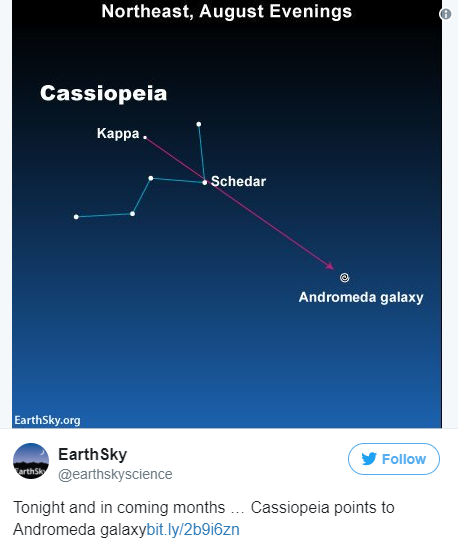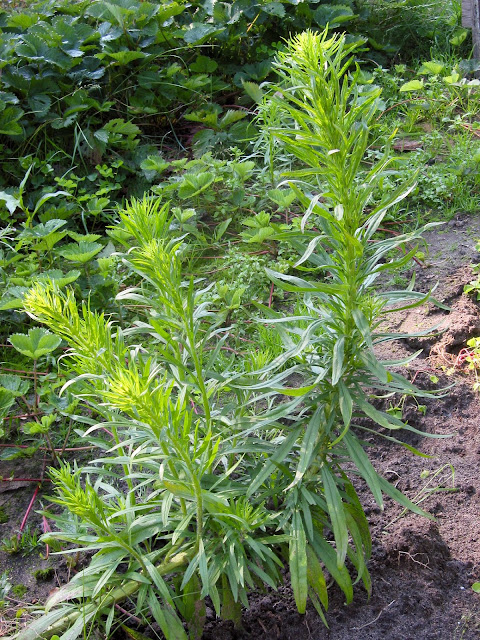Summary: Occurring as 2016’s second and last solar eclipse, the Sept. 1, 2016, annular eclipse is primarily viewable over Central Africa and Madagascar.
The Sept. 1, 2016, annular eclipse traces a path over the land masses of Central Africa and Madagascar and occurs as the second and last solar eclipse of 2016.
Partial eclipses precede and follow Thursday’s annular eclipse. The viewing area of the partial eclipse encompasses three oceans: Atlantic, Indian, Southern. Thursday’s annular eclipse is visible as a partial eclipse over four continents: most of Africa, much of the western Arabian Peninsula in western Asia, a portion of northeastern Antarctica, the western slice of the state of
Western Australia. The partial eclipse is also viewable over Southern Sumatra and most of Java in the Indonesian archipelago.
The second and last solar eclipse of 2016 begins as a partial eclipse at 06:13:08.3 Coordinated Universal Time (UTC). The start of annularity takes place at 07:17:49.6 UTC. The Sept. 1, 2016, annular eclipse ends at 10:55:53.7 UTC. The partial eclipse ends at noon, 12:00:40.5 UTC.
The complete ecliptic event, beginning with a partial eclipse and ending with a partial eclipse, accounts for about 5.7 hours. The annular eclipse completes its path in about 3.6 hours.
On his map of the Sept. 1, 2016, annular eclipse, NASA astrophysicist Fred Espenak (“Mr. Eclipse”) indicates the path of annularity with double red lines. The path of annularity ribbons from the South Atlantic Ocean eastward across Central Africa and northern Madagascar and ending in the South Indian Ocean west of Australia.
EarthSky Tonight’s lead writer, Bruce McClure, notes that the path of annularity extends across approximately 13,400 kilometers (8,330 miles). Fred Espenak places the path width at 99.7 kilometers (61.95 miles) at the point of greatest eclipse, i.e., the instance of closest passage of the axis of the lunar shadow cone to Earth’s center.
Fred Espenak places the time of the greatest eclipse at 09:06:53.9 UTC. Greatest eclipse designates the instant of closest passage of the axis of the lunar shadow cone to Earth's center. The greatest eclipse occurs over southwestern Tanzania in East Africa. The lucky location is sited in eastern Tunduru District in southeastern Ruvuma Region. The geographic coordinates are 10 degrees 40.9 minutes south latitude, 37 degrees 45.7 minutes east longitude.
The greatest duration of the annular eclipse happens at 09:05:09.7 UTC. Greatest duration lasts for 3 minutes 5.6 seconds. A site in the eastern Tunduru District, northwest of the greatest eclipse’s occurrence, claims greatest duration. Geographic coordinates for the location are 10 degrees 26 minutes south latitude, 37 degrees 21 minutes east longitude.
An annular eclipse is a solar eclipse in which the sun surrounds the entire silhouetted lunar disk with an excruciatingly bright annulus (Latin: “little ring”). The moon’s distance is too far from Earth for complete coverage of the sun.
In an annular eclipse, the moon casts its antumbral shadow onto Earth. The antumbra (Latin: ante, “before, in front of” + umbra, “shadow”) is one of a shadow’s three distinctive parts. A shadow’s darkest innermost part is termed the umbra. Total solar eclipses are associated with umbral shadows.
Penumbra (Latin: paene “almost”) refers to the shadow’s faint, outer flanks. Partial solar eclipses are associated with penumbral shadows.
Antumbra applies to the faint, outer part extending lengthwise from the umbra. Annular eclipses are associated with antumbral shadows.
EarthSky Tonight’s lead writer, Bruce McClure, notes that in the 21st century, which runs from Jan. 1, 2001, to Dec. 31, 2100, annular solar eclipses are in second place, with 72 occurrences. First-place partial solar eclipses account for 72 of the century’s 224 solar eclipses. In third place, total solar eclipses make 68 appearances. Rare hybrid eclipses, which are partly annular and partly total, claim 7 events.
The most recent occurrence of an annular eclipse, prior to Thursday’s appearance, took place Tuesday, April 29, 2014. The next annular eclipse takes place Sunday, Feb. 26, 2017.
| Animated GIF of Thursday, Sept. 1, 2016, annular eclipse shows path of annularity and path of partiality: A.T. Sinclair/NASA, Public Domain, via Wikimedia Commons |
Acknowledgment
My special thanks to talented artists and photographers/concerned organizations who make their fine images available on the internet.
Image credits:
Image credits:
Path of annular eclipse, Sept. 1, 2016: Fred Espenak/NASA Goddard Space Flight Center, Public Domain, via Wikimedia Commons @ https://commons.wikimedia.org/wiki/File:SE2016Sep01A.png
Animation of path of annular eclipse, Sept. 1, 2016: A.T. Sinclair/NASA Eclipse Web Site, Public Domain, via Wikimedia Commons @ https://commons.wikimedia.org/wiki/File:SE2016Sep01A.GIF
For further information:
For further information:
“Annular Solar Eclipse of 2016 Sep 01.” NASA Eclipse Web Site.
Available @ http://eclipse.gsfc.nasa.gov/SEgoogle/SEgoogle2001/SE2016Sep01Agoogle.html
Available @ http://eclipse.gsfc.nasa.gov/SEgoogle/SEgoogle2001/SE2016Sep01Agoogle.html
Astronomical Society Southern Africa. “Solar Eclipse: 1 September 2016.” YouTube. Scheduled for Sept. 1, 2016.
Available @ https://www.youtube.com/watch?v=xebDaX1PJF0
Available @ https://www.youtube.com/watch?v=xebDaX1PJF0
Espenak, Fred. “Glossary of Solar Eclipse Terms.” NASA Eclipse Web Site > Solar Eclipses.
Available @ http://eclipse.gsfc.nasa.gov/SEhelp/SEglossary.html#annular
Available @ http://eclipse.gsfc.nasa.gov/SEhelp/SEglossary.html#annular
Espenak, Fred. “Google Maps and Solar Eclipse Paths: 2001-2020.” NASA Eclipse Web Site > Solar Eclipses.
Available @ http://eclipse.gsfc.nasa.gov/SEgoogle/SEgoogle2001.html
Available @ http://eclipse.gsfc.nasa.gov/SEgoogle/SEgoogle2001.html
Koehn, Larry. “Annular Eclipse of the Sun Over Africa On September 1, 2016.” YouTube. April 28, 2016.
Available @ https://www.youtube.com/watch?v=VWxRj2fhH4M
Available @ https://www.youtube.com/watch?v=VWxRj2fhH4M
Kramer, Bill. "Eclipse Chaser Terminology." Eclipse Chasers. Last update April 17, 2015.
Available @ https://www.eclipse-chasers.com/php/tseAssist.php?SA=1#F
Available @ https://www.eclipse-chasers.com/php/tseAssist.php?SA=1#F
Marriner, Derdriu. “2016 Eclipse Lineup Features Two Lunar and Two Solar Eclipses.” Earth and Space News. Tuesday, March 8, 2016.
Available @ https://earth-and-space-news.blogspot.com/2016/03/2016-eclipse-lineup-features-two-lunar.html
Available @ https://earth-and-space-news.blogspot.com/2016/03/2016-eclipse-lineup-features-two-lunar.html
Marriner, Derdriu. “Alaska Airlines Flight 870 Adjusted for Solar Eclipse Chasers.” Earth and Space News. Tuesday, March 8, 2016.
Available @ https://earth-and-space-news.blogspot.com/2016/03/alaska-airlines-flight-870-adjusted-for.html
Available @ https://earth-and-space-news.blogspot.com/2016/03/alaska-airlines-flight-870-adjusted-for.html
Marriner, Derdriu. “March 8 to 9, 2016, Total Solar Eclipse Path Crosses Indonesia.” Earth and Space News. Friday, March 4, 2016.
Available @ https://earth-and-space-news.blogspot.com/2016/03/march-8-to-9-2016-total-solar-eclipse.html
Available @ https://earth-and-space-news.blogspot.com/2016/03/march-8-to-9-2016-total-solar-eclipse.html
McClure, Bruce. “African solar eclipse on September 1.” EarthSky > Tonight. Aug. 31, 2016.
Available @ http://earthsky.org/tonight/african-solar-eclipse-on-september-1-2016
Available @ http://earthsky.org/tonight/african-solar-eclipse-on-september-1-2016
“September 1, 2016 – Annular Solar Eclipse.” Time And Date > Sun & Moon > Eclipses.
Available @ http://www.timeanddate.com/eclipse/solar/2016-september-1
Available @ http://www.timeanddate.com/eclipse/solar/2016-september-1
“Tanzania: Administrative Division.” City Population > Africa.
Available @ http://www.citypopulation.de/php/tanzania-admin.php
Available @ http://www.citypopulation.de/php/tanzania-admin.php
“What Are Solar Eclipses?” Time And Date > Sun & Moon > Eclipses > Frequency.
Available @ http://www.timeanddate.com/eclipse/solar-eclipse-frequency.html
Available @ http://www.timeanddate.com/eclipse/solar-eclipse-frequency.html
“What is an Annular Solar Eclipse?” Time And Date > Sun & Moon > Eclipses.
Available @ http://www.timeanddate.com/eclipse/annular-solar-eclipse.html
Available @ http://www.timeanddate.com/eclipse/annular-solar-eclipse.html










